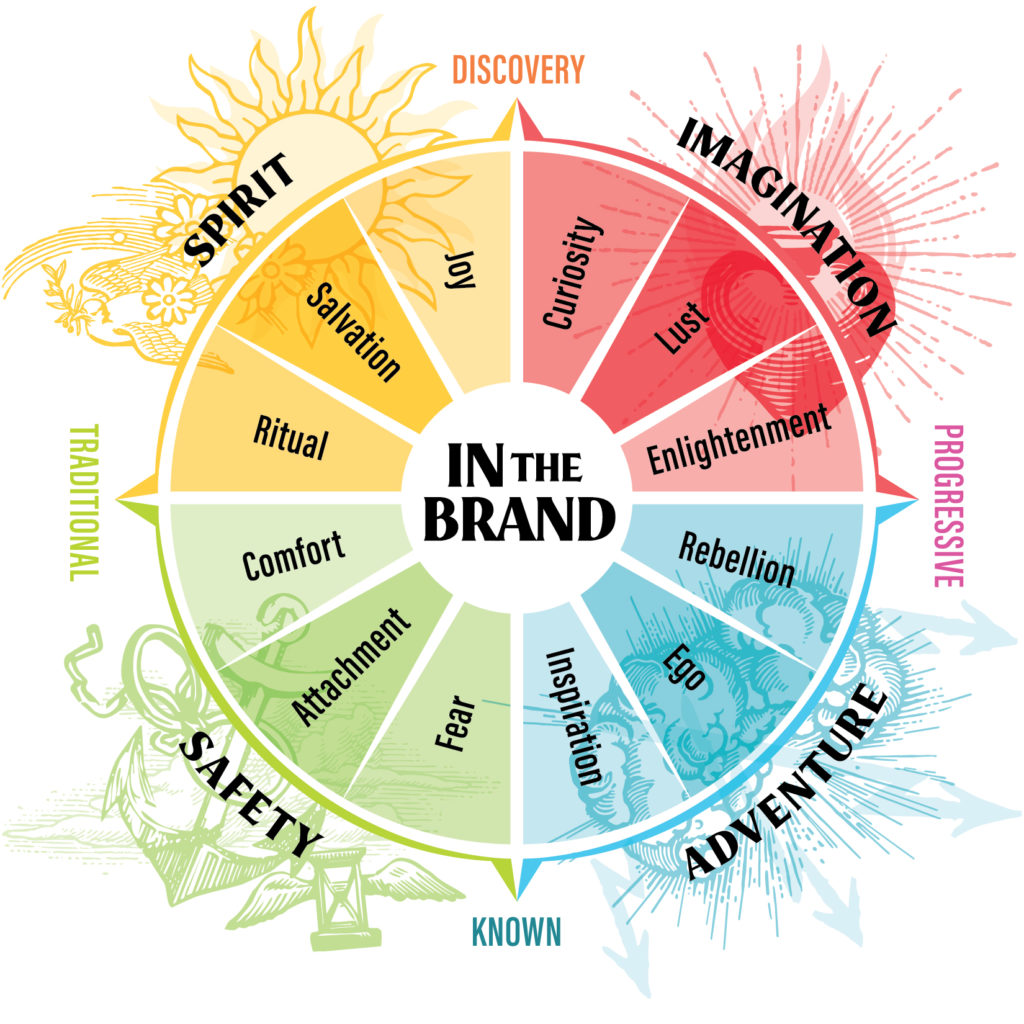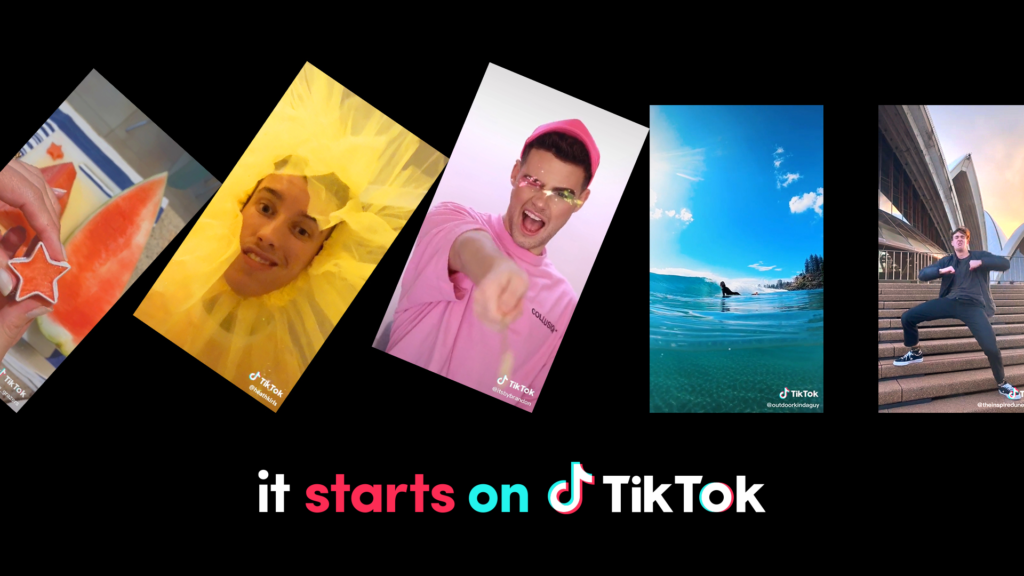Brands are always influencing us.
They make us laugh.
They make us cry.
They tug at our heartstrings and light a spark in our minds.
Well-executed and authentic emotional branding pushes us to take action and entices us to return as customers. By making us feel, they draw us into the brand.
Here at Flux, a branding firm in Los Angeles, we’ve helped hundreds of clients create successful brands. And we’ve created a graphic representation of how brands use emotions to make their way into our hearts and minds.
We call it the Brand Feel Wheel.
It’s a powerful tool for understanding how brands operate – and then translating that into their brand positioning. Locating brands on the wheel allows us to take a deep look at how today’s most influential companies are shaping our consciousness.

In last month’s essay, we delved into the different parts of the wheel, exploring brands that fall into each of the Four Feeling Quadrants.
This month, we’re focusing on brands that fall into the Adventure Quadrant.
What kind of brands inspire a sense of adventure and how do they use emotions to motivate us?
What is an Adventure Brand?

Adventure Brands give a sense of excitement, exploration, and advancement. They make us feel like we can go anywhere, do anything, or be anyone. They’re leading the journey somewhere better, enticing us to come along for the ride.
On the Brand Feel Wheel, the Adventure Quadrant exists on the Known-Progressive side of the Perception Axes. Brands in this quadrant provide a known experience with a progressive brand positioning.
- They’re offering a product or service you’re familiar with. However, they are adding a twist that makes them the better, smarter, and/or easier choice.
Look at Airbnb as a branding example here. The experience of going to a hotel is nothing new. But the idea that anyone can be a host – and we all have the opportunity to live like a local? This is a very unique take on hospitality branding and business models.
And the industry has never been the same.
Because they combine the known with the progressive, Adventure Brands are often industry disruptors.
• Disruptors are companies that respond to a gap in an established sector and create a better way of delivering what we want.
• Disruptive brands create products, services, or ways of doing things that displace existing market leaders and turn industries on their heads. It’s not that they are the first to do something– it’s that they do it so much better.
Some famous Adventure Brands that have disrupted their respective industries include Uber, Tesla, Dollar Shave Club, Airbnb, and SpaceX.
3 Examples of brand positioning that’s emotional and disruptive

Adventure Brands play on our constant desire for improvement. They shake up our habits, change our minds and make us wonder how we lived without them.
But how does their brand positioning and messaging convince us to adopt something new?
They tap into three main emotional motivators to engineer action and brand loyalty: inspiration, ego, and rebellion.
These brands connect buying their product or service with achieving one of these three desired feelings, providing a much more powerful incentive than the offering alone. Let’s look at three examples of campaigns created by Adventure Brands that play on powerful emotions.
1. Inspiration: an opportunity for growth
What is it: Inspiration is the process of being mentally stimulated to do or feel something, especially to do something creative.
Why brands use it: Inspiration moves us to action. It’s aspirational, pushing us to elevate our experiences from ordinary to extraordinary. When we feel inspired, we’re open to do things outside of our everyday routines. Brands play on this feeling to push us in their direction.
How to tap into it: Inspiration is highly personal– what inspires one person may do nothing for another. Adventure brands using inspiration as their motivator must identify the niche group that has an affinity with their offering and appeal to them.

EXAMPLE:
Brand: Airbnb
Campaign: Live There
Airbnb has revolutionized hospitality branding (and the entire industry) by allowing anyone to live like a local. Their 2016 campaign urged travelers not to go to major destinations as tourists, flashing dreary images of Segway tours and crowded tour buses. Instead, when they go with Airbnb they don’t just visit– they experience. They used the motto, “Don’t go there. Live there. Feel at home, anywhere.”
They used smart brand positioning to highlight their service as a way to escape the ordinary and enter into a reality you couldn’t access otherwise. It’s more than a place to stay– it’s the key to unlocking an inspirational, magical experience.
This is a hallmark of an adventure brand.
2. Ego: the world revolves around you
What is it: Ego refers to a person’s sense of self-esteem or self-importance.
Why brands use it: Ego is a powerful motivator that appeals to a massive audience. Unlike inspiration which is often deeply personal, ego is universal. We all want to feel good about ourselves.
How to tap into it: Brands play on our egos by making us feel special. They often present the brand-audience relationship as a team, appealing to our desire to feel important. This brand messaging leads us to believe that we’re an integral part of their success and that they are an integral part of ours, forging a deep emotional connection.

EXAMPLE:
Brand: TikTok
Campaign: It starts on TikTok
TikTok has adopted a progressive position recently, particularly in response to the threat of being banned in the US. The social media platform unveiled a 2020 campaign highlighting that “every new story created on TikTok is part of an exciting journey,” connecting people across the world to the same idea.
The spot is a mash-up of viral trends that have taken hold across the globe through TikTok this year, with the message “It starts from you. It starts on TikTok.” It’s a theme of unity, but also one that’s deeply individual. It plays on our desire to be the first, the trendsetter, the leader.
TikTok makes you believe that this is where you can tap into your potential.
3. Rebellion: go against the grain
What is it: Rebellion means the action or process of resisting authority, control, or convention.
Why brands use it: Rebellion can be incredibly exciting, enticing people to come along for the adventure. It also aligns with deeply held beliefs about what’s just and right, meaning that brands that successfully use rebellion as a motivator often have impressive brand loyalty.
How to tap into it: Positioning your brand as the anti-something can be a highly effective (though risky) position. It’s essential that brands playing on rebellion understand their target audience and are authentic with their promises. Consumers motivated by rebellion are highly opinionated and will easily turn on brands that aren’t practicing what they preach.

EXAMPLE:
Brand: Patagonia
Campaign: Don’t Buy this Jacket
Patagonia is an adventure brand in every sense of the word. It is an outdoor clothing company that has positioned itself as the opposite of fast fashion, creating high-quality products through sustainable and transparent manufacturing.
One of their most famous campaigns was revealed on Black Friday in the New York Times, asking people not to buy their products on one of the biggest shopping days of the year. Instead, the ad encouraged them to reuse and recycle in order to protect the environment.
The campaign plays on our desire to rebel against injustice and do what we can to change the future. Elevating shopping from a simple purchase to a moral act with a global consequence creates deep brand loyalty based on an emotional connection forged through a shared value system.
Our branding firm will help you find your “Feel”

Branding is a kind of magic – it turns concrete services and products into deeply held beliefs and emotions. But it’s no secret mystery. It requires a deep understanding of who you are, what you believe, and what you represent.
Locating your brand on the Feel Wheel helps you establish and define your “feel” – or your spirit. Then, by working with our branding firm in Los Angeles, you can effectively draw out these big ideas, providing a rich set of emotions that can be used to inspire customer action and loyalty – as well as brand memorability.
Next month we’ll explore another Feeling Quadrant and dive deeper into the brand. But in the meantime, don’t hesitate to reach out to our team to see how we can help you.